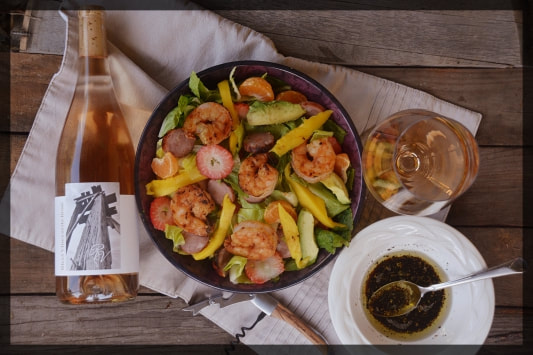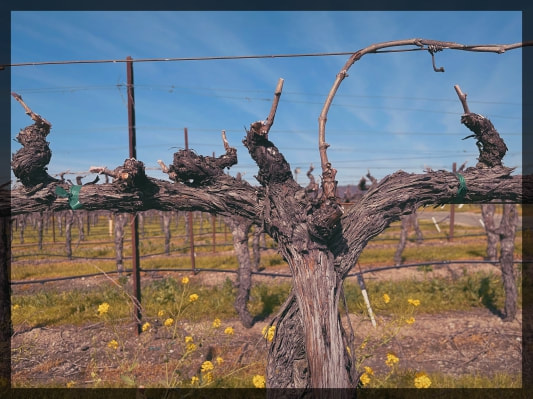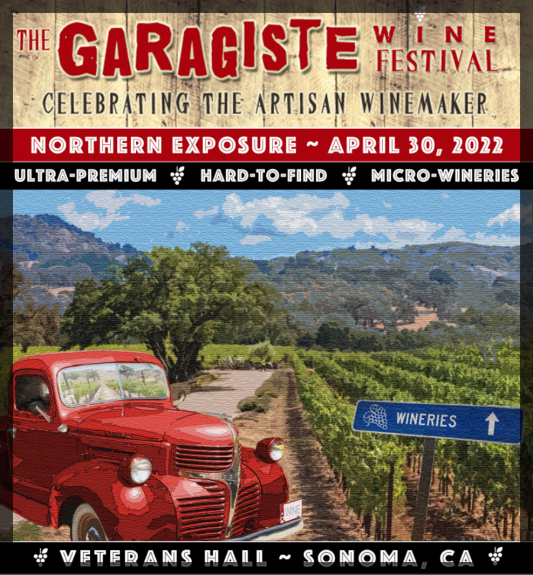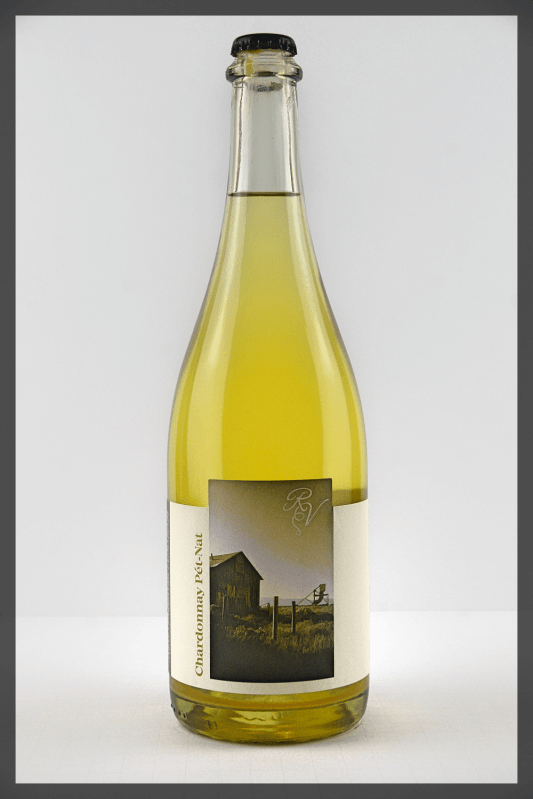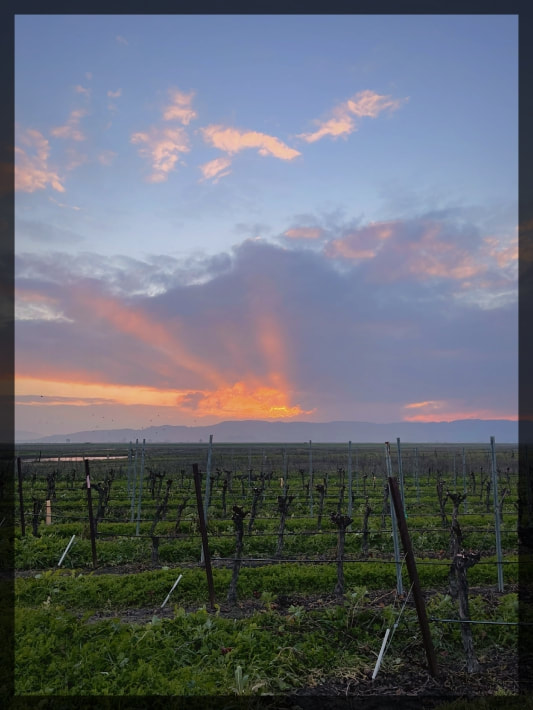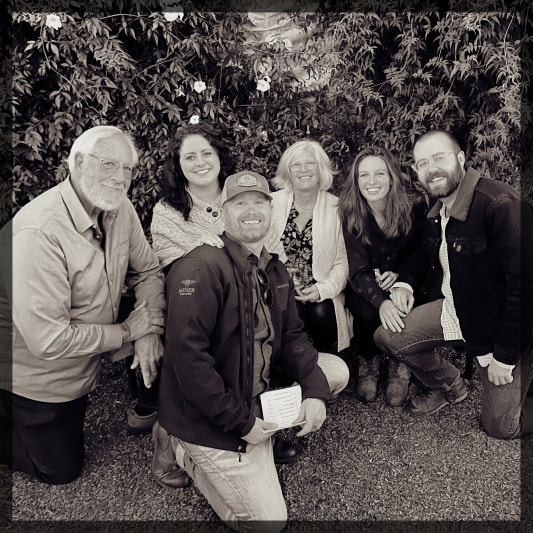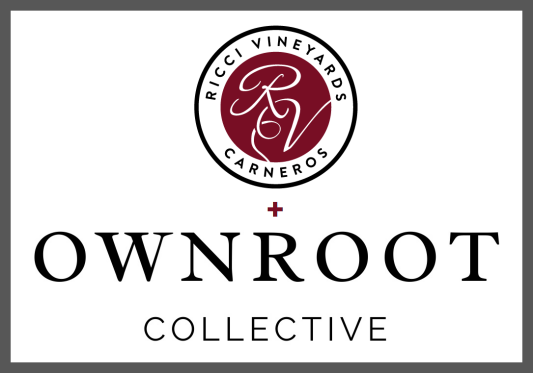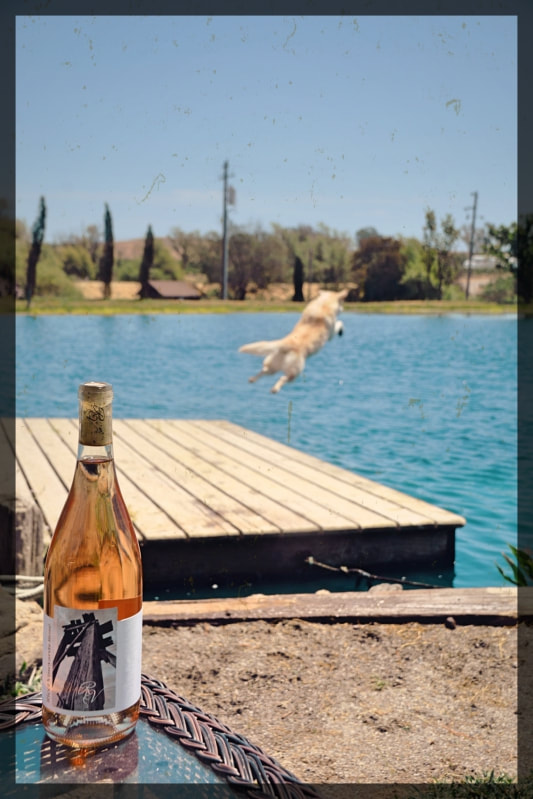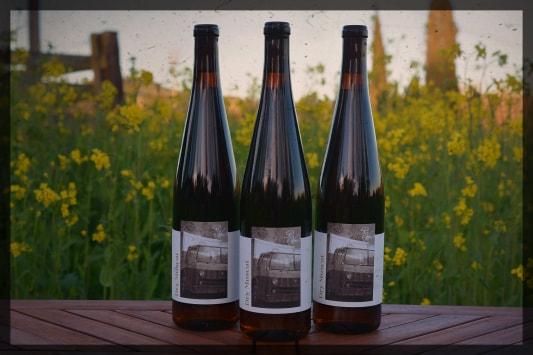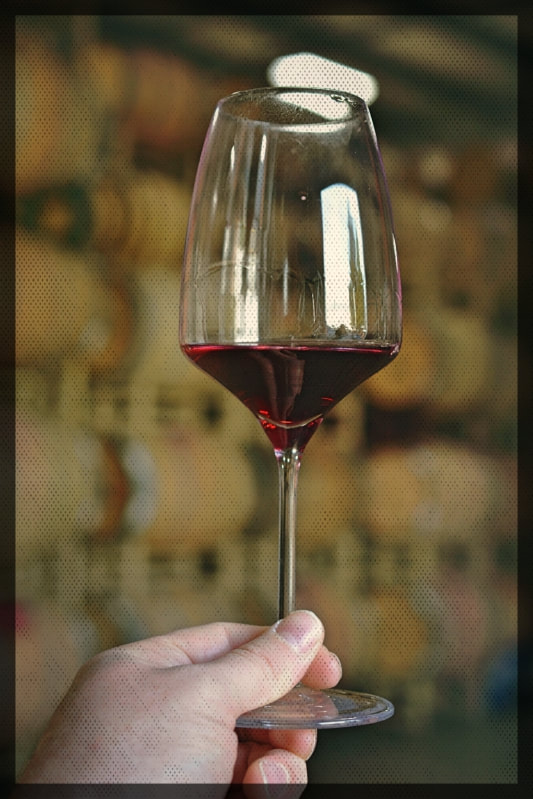|
As the weather starts to heat up, people can sometimes learn towards lighter fare that can be enjoyed on the back patio. A fresh salad incorporating lots of ripe fruit is an excellent choice — especially when some BBQ flair is mixed into the equation. We think we've created an awesome recipe that will provide lots of summertime enjoyment and deliciousness. Pairing the salad with some of our rosé of Pinot Noir wouldn't be a bad idea either. Just sayin'. ;)
Prep (30 minutes)
In two separate bowls, shred and divide Romaine lettuce. Divide evenly the strawberries, mandarin wedges, and avocado. Season shrimp w/paprika, pepper flakes, onion and garlic powder. Drizzle with olive oil. Grill shrimp and sausage and let them cool. From the mango, cut thin slices and add to salad. Combine olive oil, balsamic vinegar, salt and pepper for dressing. Mix well and apply based on preference. Add sliced sausage, shrimp and sprinkle with pine nuts. Enjoy!
0 Comments
Just because we're stuck in the waning days of winter and the grape vines remain looking a little drab doesn't mean there isn't a lot happening in the vineyard. Quite the opposite is true. The vines are just starting their annual wake-up period as they prepare for a new growing season ahead — but what does this actually mean? Well, to explain things better, we have to rewind a bit with some backstory to this Spring reemergence. Towards the tail end of the growing season, as the fruit of the vine has matured and ripened, the vine starts shutting itself down for the colder months ahead. Shoots will stop growing outward and all foliage will slowly start to dissipate. This process is called acclimation. By the time the growing season has fully stopped, and all the leafy canopies are gone, a grape vine can appear as just a trunk and a bunch of bare "twigs" sticking out of it. During this process of dormancy, most energy reserves of the vine retreat into the trunk and are stored, ready to be expended to start new growth when the weather warms. Fig. 1 - A spur-pruned vine ready for the new growing season. The thick, horizontal extensions of the vine are called cordons.
Let me start this post by stating that I apologize for the amateurism of my video skills. Both behind the camera, and in front of it, my talents are rudimentary at best. Hopefully I'll get better with time, but at this present juncture it is abundantly clear that Zoey is the true star of the production. With all of that being said, Zoey and I took a few minutes during a cold, rainy Sunday afternoon (hence why we are in front of a firepit) to share a preview of the upcoming wines in the April/Spring 2023 membership allotment. I've offered a summary of these wines in writing below in case the video only skimmed the surface. Note: If Zoey seems a little wobbly in the video, she's on some medication that makes her a bit uncoordinated. Just wanted to alleviate any concerns. ☺ UPDATE 3/16/23: Due to our current inventory levels, some vintages in the April shipment have been changed to meet demand.
|

